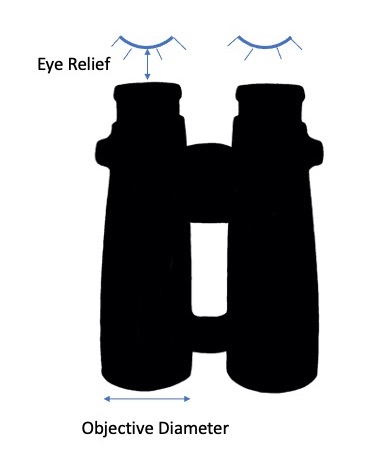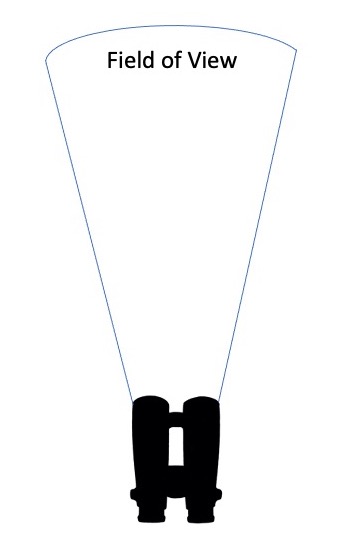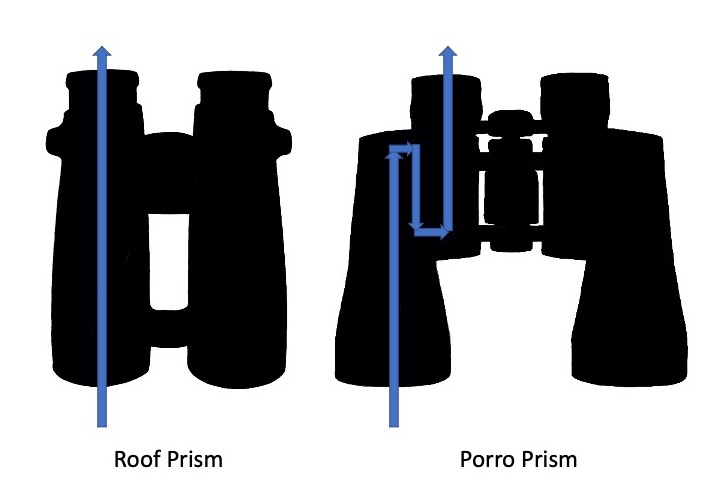- Home
- Finding the Right Binoculars
Finding The Right Binoculars
One of the most indispensable tools for watching birds in your backyard, or if you get more serious about bird watching, is binoculars. Binoculars can let you see details on a bird that are impossible otherwise. So, what is the right one for you? There exist so many different options and makers that it can be quite overwhelming at first. Keep reading and we’ll give you our steps for finding the right binoculars for you.
Why Binoculars
First, let’s talk about why you should get binoculars. Rarely will a bird come so close you can see all the details of their feathers, or soft parts around the eyes and bill. Instead, you’ll need some tool for magnifying them so you can see those details. And trust me, seeing some birds up close is worth it. I once worked with someone who swore they could use a nice camera with a big lens to bring birds up close. For some birds, like herons and egrets that are large and slow-moving, it seems to work. But for small birds that are quick and fast, a camera just doesn’t do it for me. The only real answer is binoculars. They allow you to bring birds up close and see things you wouldn’t otherwise.
Specification Details
When you go shopping for binoculars, you’ll see several different numbers associated with each pair. Let me explain what each of those mean, plus some other specifications.
Magnification
The first spec you’ll see are two numbers separated by an ‘x’, like 7x35 or 8x42 or 10x42 or 10x50. The first number is the Magnification. This refers to how many times greater the size of the bird will be increased. Obviously, the higher the number, the greater the magnification.
Objective Diameter
The second number is the Objective Diameter. This is the diameter of the lens farthest from your eyes. A larger value tends to give you a sharper image and will be better for birds that are farther away from you.

Eye Relief
Eye Relief is how far away from the lens your eyes must be in order to see a clear view of a bird. This spec is most important for people that wear glasses. If you do, you’ll want a larger Eye Relief measurement.
Field of View
This is the width of the area you can see through the binoculars. It is inversely related to the Magnification, so that higher power binoculars have a smaller Field of View. In my experience, this is only a real issue for true beginners. A larger Field of View makes it easier to find a bird through your binoculars. Once you’ve gotten some practice, finding and following a bird through your binoculars isn’t that difficult. But if it is, then a larger Field of View can be valuable.

Close Focus Distance
This is the smallest distance that the binoculars can focus on. Anything less than this and you’ll never get a clear focus on that bird. This is only really important if you’re trying to watch birds that are physically close to you, like one on a feeder just outside a window, or a small bird low in the vegetation along a trail.
Types of Binoculars
There are two main types of binoculars that you’ll have to choose from. Porro Prism binoculars have an offset midway along the casing, causing the light to be reflected multiple times before reaching your eyes. The alternative is called Roof Prism, where the light passes in a straight line through the lens to your eyes. For equally priced binoculars, Porro Prisms tend to have better image quality, while Roof Prisms are better for durability and waterproofing. However, the key here is equal prices. You cannot compare a $100 Porro Prism with a $1000 Roof Prism and come to the same general conclusions.

Other Bells and Whistles
There are several options you might also want to consider as well. These are separate from the specifications listed above.
Image Stabilization
This is an increasingly common option for binoculars. They use either a gyroscope or a vibration dampener to stabilize the image. The value is they can allow you to not be as steady as otherwise needed. However, it’s a matter of opinion as to how valuable Image Stabilization can be. Some users swear by it and wouldn’t be caught dead without it. Others, like myself, have never used a binocular with it that I felt had a good, clear image. To me, proper technique holding and using binoculars can be just as effective. But that's just me...
Optical Coatings
On the higher end binoculars, you can find one or both of several coating applied to the lens to make them more effective. Anti-reflective Coatings will increase image contrast, while Phase Correction Coatings will sharpen the resolution. Both of these are recommended, but you’ll probably pay a bit more for each.
How to Select the Right Binoculars
The most important step for picking out the right binoculars is to try some out. See which ones work best for you. While you’re trying them out, here are some aspects to look for:
- How well they fit in your hands. If you have small, or even large, hands, this can be an issue.
- How heavy they are. Lighter ones are better, generally, since you may be holding them up for extended periods. Binoculars with an objective diameter of 50mm tend to be pretty heavy, and I feel are best suited for use on a tripod.
- How well you can see through them. Make sure you don’t see double vision, and that you can change focus quickly.
- Try both close focus and distance focus.
- If possible, try them out in lower light situations. Not all birds are going to be in bright sunshine, so the ability to see in low light can be valuable.
- Experiment with different magnifications. The most common binoculars for bird watching are 7x35, 8x42, and 10x42, and all are good for birds. Try out all of them and see which one works best for you. 8x and 10x are probably the most common in the higher end binoculars, but 7x allows for a wider field of vision and is great for beginners.
Final Points
Two final points for finding the right binoculars. The first is to try out as many brands and models as you can. The first ones you try may work very well for you, but they may not be best.
The second point relates to cost. As with many things in life, you get what you pay for. The less expensive models tend to be cheaper in quality. But, buy as much as you can afford. I feel this is important. Binoculars are not something you’ll be replacing every couple of years, so spending a bit more on a better pair will be an investment you’ll appreciate for years. I’m not saying to spend money you don’t have. But don’t scrimp, either. Higher quality binoculars will reward you for years to come and make watching birds more interesting and enriching.
My first pair of binoculars was an inexpensive no-name porro prism model. I bought them for watching college football games from the stands. Only later did I get into bird watching. And those binoculars were okay at first. But the first time I looked at a Mockingbird through a high-quality pair, I was blown away. With my cheap binoculars, they all looked rather uniform gray. And rather boring, I must admit. But with some really nice binoculars, I saw all the light feather edging Mockingbirds have. Which I had been missing out on for years. And even the common Mockingbird was now much more interesting to watch.
Good luck finding the right binoculars! I think they will open a whole new world regarding the birds in your back yard. Enjoy!